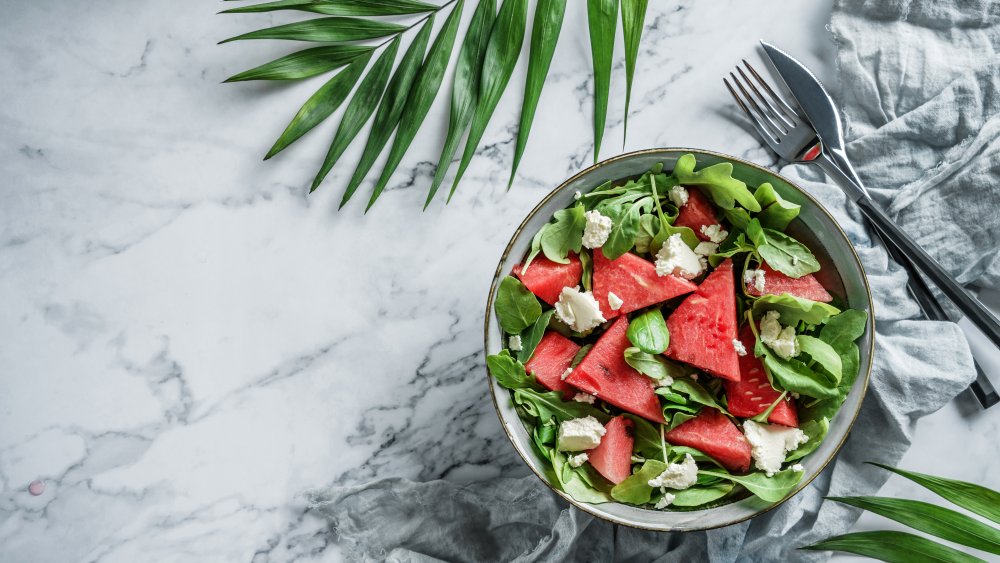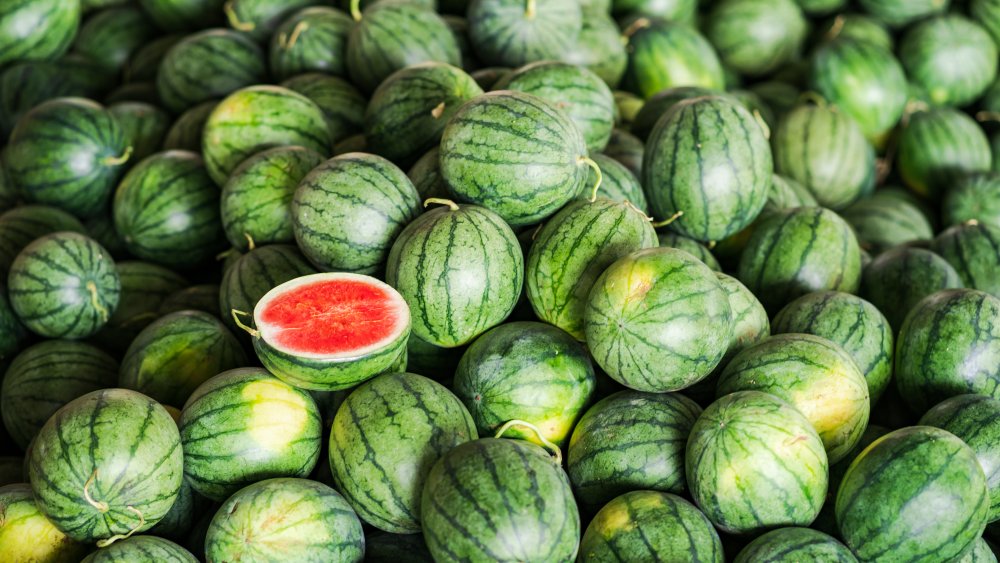The Real Reason Watermelon Can Be Considered A Vegetable
You're probably shaking your head right now, and we don't blame you. Does anybody actually enjoy these frivolous, fruit-versus-vegetable debates? After all, a tomato is a tomato. It's the thing that makes salads, pizzas, and pasta dishes great, and frankly, you don't care if your somewhat-pretentious friend wants to insist that it's a fruit and not a vegetable. (Technically, it can be both, according to Healthline.)
Then, there was the avocado, which has the audacity not only to be classified as a fruit, but more specifically as a berry, which leaves you pondering your burritos in a way you really didn't want to (via Stanford Magazine) — and strawberries aren't really berries, either.
Then comes the watermelon. The simple, refreshingly sweet, vibrantly-colored fruit. The basis of so many fun summer recipes, from vodka-watermelon sangria to salted watermelon ice cream (via Food & Wine). Sure, it's been known to shimmy its way into a salad or two, but who doesn't add fruit to salad once in a while?
Then, you discover the strange factoid that throws everything into question. In 2007, Oklahoma declared watermelon its official state vegetable (via NPR). After the vote passed on this bill, former Senator Don Barrington told lawmakers (via The Guardian), "The controversy on whether watermelon is a fruit or vegetable has been officially decided by the Oklahoma legislature."
Yikes, Oklahoma.
The true answer? The sugary treat seems to surpass categorization: watermelon can actually be both a fruit — and a vegetable.
One melon, two worlds
Botanically, the watermelon is a fruit, according to Huffington Post. The plant produces flowers, and then its ovary creates the green-and-pink melon, which contains the seeds. Technically, that's what a fruit is, if you want to think about a plant's ovaries, that is. That's why the tomato is a fruit — it develops from the spiky, yellow flower of the tomato plant.
Pretty straightforward, right? However, things get murky when you start to consider the Cucurbitaceae: a plant family that includes squash, cucumbers and, lo and behold, watermelons (via SF Gate). When you start to group the watermelon with cucumbers, the logic gets weird. Technically, the cucumber is a fruit, according to the botanical definition we mentioned above. So is zucchini. We know, it's awkward.
When you look at the Cucurbitaceae family from a culinary perspective, rather than a botanical one, you might drift to the vegetable side of the debate. Most of these foods are used for savory dishes: zucchini is tossed with pasta. Cucumbers are pickled with vinegar. Watermelon has been seared, pickled, grilled, mixed into soups and tossed into ceviches (via Food & Wine).
So, can the watermelon stand in both the fruit and vegetable worlds? By all means, according to Oklahoma-based horticulturist Dr. Lynn Brandenberger.
"There is no black and white in biology" she explained (via The Wall Street Journal). "It's all dingy gray."
For now, we're just thankful that the produce itself is not dingy gray, but tasty, pink, and versatile.

